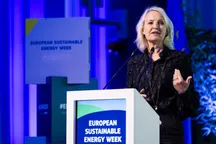Photovoltaic power generation is pivotal in the transition to a clean energy system and the achievement of a climate-neutral economy. To this end, it is important to enhance its sustainability while creating wealth and additional employment opportunities in Europe.
Consequently, project results are expected to contribute to all of the following outcomes:
- Reduce the environmental footprint associated to PV technology deployment across all the phases of the system lifetime (production, transport, installation and end of life).
- Define design and processing guidelines to optimally address circularity of PV systems for one or several PV technologies (silicon, thin film, organic PV, perovskite PV, etc.).
In order to identify the main areas of improvement for the environmental footprint and resource efficiency of PV, it is necessary to regard the technology's entire lifecycle. Using Life Cycle Assessment (LCA), important knowledge can be gained as to which processes and materials contribute most to the overall environmental footprint. The lifecycle-thinking also aids in identifying key candidates to reduce the use of resources from the design phase. Although it seems self-explanatory that reduction/substitution or efficient use of critical materials lead to improved environmental impact, it is of course essential that these do not adversely affect the function
...




